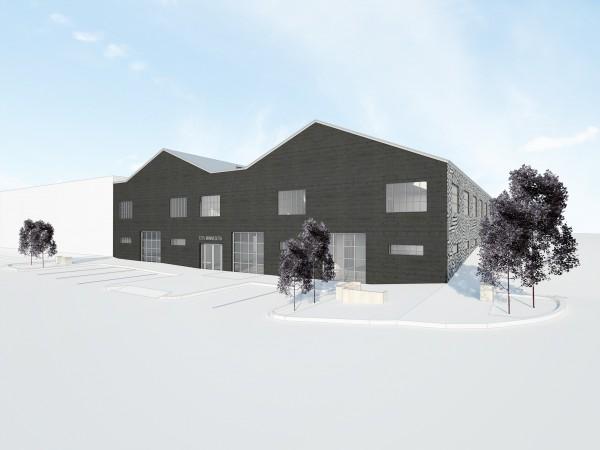Minnesota Street Project: A New Art Center in San Francisco
by Hélène Planquelle
San Francisco has been faced with the alarming skyrocketing of renting for some years already. Mainly due to the booming Silicon Valley Tech industry, rents have gone by 40% since 2010. The percentage of expulsions have similarly gone by 38%. This situation is positive for the town since it means progress, modernization, and economic prosperity. But the booming Tech industry leaves no room for other sectors such as small businesses or art. However San Francisco is nationally renowned for being on the cutting edge of art: museums, galleries, public art, open studio etc… But for how long?
Artists struggle to survive in a town where the average rent for a studio is 400 dollars: a financial hole for local artists who also have to pay their housing rent amounting to about $1,500 every month. But artists are not the only ones to suffer from this situation: galleries do to, even the most established ones. Some galleries established for decades are expelled because they cannot afford their rent anymore.
The Minnesota Street Project seems like the “San Francisco solution for a very San Francisco problem” as Deborah Rappaport, in charge of this project, phrases it.
The idea emerged two years ago: faced with the expulsion of renowned galleries on Union Square, Deborah Rappaport and her husband, both working in the real estate industry but also philanthropists and art collectors, decided to take action to stop the imminent disaster of the local art community. Without particular experience in running a gallery or cultural center, they believe their fresh eyes and input can be an asset for the project.
The Minnesota Street Project was born (in reference to the name of the street where it is located). The concept is simple: gather a bunch of art galleries in a renovated warehouse and ask for rents way below the market value. The hipster Dogpatch district seemed like the ideal place: the impossibility to erect building in this part of the town cutted competitions with realtors short. Based on a “for-profit” model –which is more common in United States than “not-for profit”- the project has not as a primary objective to be lucrative, but to be viable enough to keep running.
The philosophy behind it is obvious: San Francisco needs to feed its vibrant art scene in order to compete with other cultural capital cities in the world. This project seems like an adequate answer to the specific real estate situation of the city. San Francisco’s town hall strongely supports the project – which is privately financed in its entirety- since the number of expulsions tarnished its image.
The Minnesota Street Project will consist of two warehouses located in the same street, one converted into a gallery complex, and the other into studio spaces. The first one will host 11 permanent galleries, one temporary gallery in order for permanent galleries to have to use the space for specific solo shows. There will also be a space dedicated to collaboration between galleries outside the Bay Area. The idea is to open the Minnesota Street Project and its community to different national and international cultural influences and to facilitate artistic encounters. Additionally, there will also be an amphitheater and a media room where lectures, and all kinds of events will be organized. The second building will count about 30 artist studios.
Some galleries embarked in the project from the start. The selection process was very natural: some galleries were selected by the founders of the project, others applied because they believed the project could benefit them greatly.
It is the case of the Bass and Reiner gallery for example. With this project, we hope to have a fresh start in dynamic artistic environment. Additionally we will not have to follow any artistic line but our own, since diversity and eclecticism is the spirit of the place.
What is the future of the project? How do the founders plan on turning it into a viable business? First of all, it is crucial to highlight that the main point of the project is to create a space of encounters where everybody is welcome. There will be one for every taste: lecture, movie, exhibition etc. Deborah’s vision for the project is clear: happy renters (sales for galleries, space of creation for artists) and a wide audience. The variety of visitors (family, artists, art lovers, curators etc.) will be key to the longevity and success of the project on the long term.
The originality of the Minnesota Street Project lies in the combination of culture and business: galleries wants to sale but also spark the artistic curiosity of the community. This project particularly corresponds to the spirit of San Francisco which is defined by innovation.
